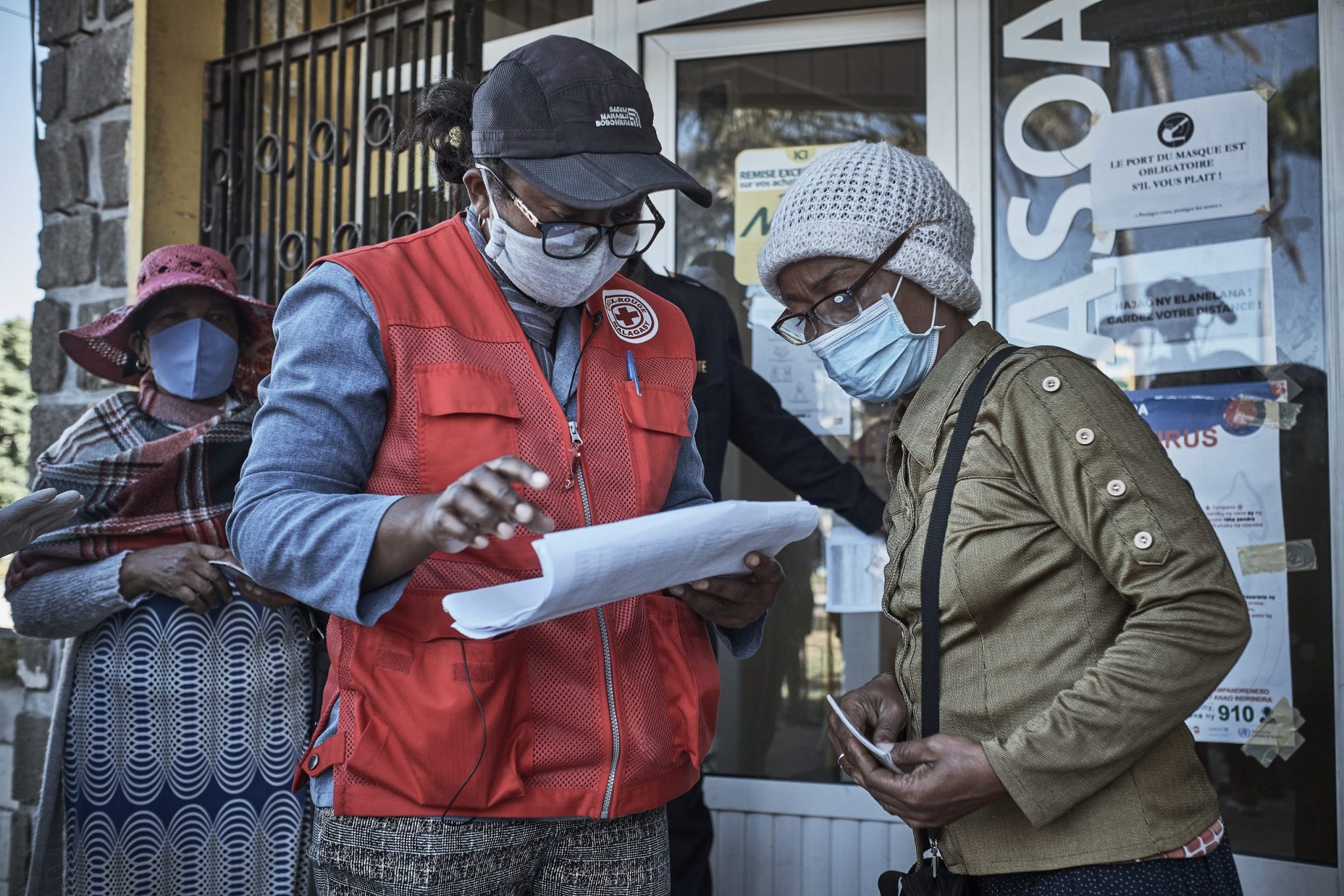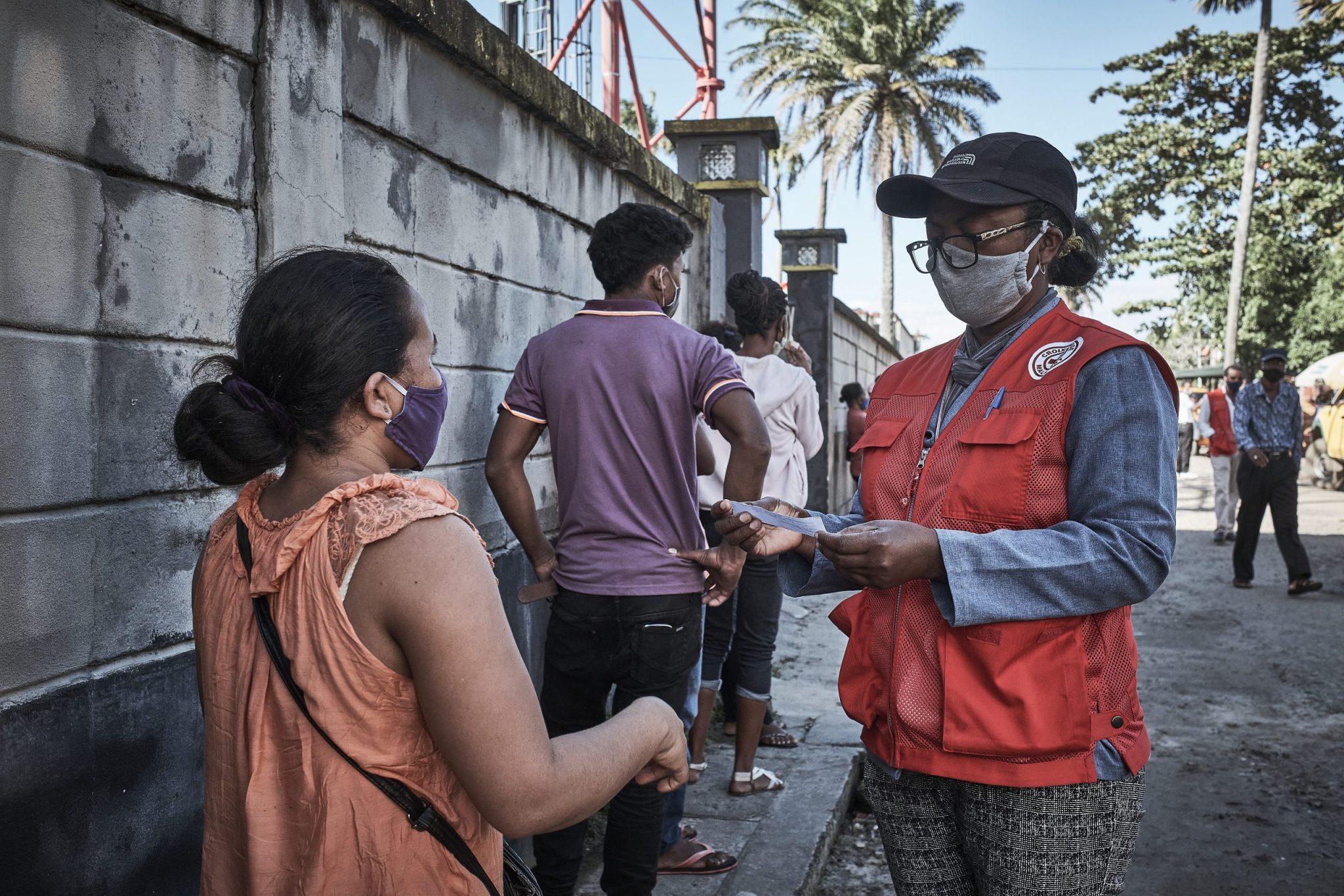Accountability to people affected by crisis at the heart of the British Red Cross
As he takes up the role of CHS Alliance Interim Chair, we hear from Robert Sweatman, Director of Performance and Accountability at Alliance member the British Red Cross (BRC), on how the CHS underpins BRC’s approach.
Why is accountability to people affected by crisis important to the International Red Cross and Red Crescent Movement?
Community engagement and accountability (CEA) is a key value of the International Red Cross and Red Crescent Movement (the Movement) and is reflected in our programmatic approach to communicating, engaging with and being accountable to the vulnerable people we support. It is integral to the delivery of quality programmes and services. It encompasses working with our National Society partners to engage people in crisis, especially the most marginalised, in an ongoing dialogue in which their voices are heard, responded to, and acted upon, whilst respecting fundamental humanitarian principles
The Movement provides a unique added-value in the larger international humanitarian system, due to its proximity to communities which helps drive the localisation agenda. No other group has a comparable global network of local community knowledge, actors and links. This is reflected by commitments and pledges made in the context of the Grand Bargain.
The Movement, supported by the British Red Cross (BRC), has been taking concrete steps to ensure that commitments to the localisation agenda and the participation revolution become reality and not just rhetoric. At the end of 2019 a resolution on CEA was unanimously passed at the Red Cross Red Crescent Council of Delegates. The resolution aims to improve the quality and effectiveness of Movement action and to reaffirm and strengthen individual and collective accountability to people vulnerable to and affected by crisis.
BRC is a critical partner for the Movement in operationalising and implementing this Movement-wide approach to CEA. In the last few years we have invested heavily in our own learning and capacity building and have made considerable progress in adopting CEA within our ways of working. Our BRC strategy 2030 clearly articulates the strong commitment we have to promoting the empowerment and dignity of crisis affected people.
In 2019, funded by the UK’s DFID (now FCDO) we developed and launched a CEA hub, https://www.communityengagementhub.org/. The hub contains more than 400 individual resources, including tools, publications and reports, case studies, videos and training packages. In addition, the hub hosts a CEA e-learning game, which was jointly created by IFRC and ICRC, as well as an interactive map highlighting the CEA capacities and skills of National Societies around the world. The map currently contains data on 67 National Societies from Europe, MENA, Asia-Pacific, Africa and South America and helps to visualise National Societies level capacity, such as expertise in mobile cinema or participatory video, as well as CEA-focal point skills, such as the number and location of CEA deployable surge staff.

Raveloarisoa Fanoeline, a Malagasy Red Cross volunteer verifies that the persons name is on the list of those receiving financial from the Malagasy Red Cross. © Ako Randrianarivelo / IFRC
The British Red Cross achieved independent verification against the CHS in 2018, following an earlier self-assessment. Why did you decide to invest in third party verification and what did the process reveal? What changes did you see?
BRC joined HAP International in 2012, were a member of the CHS technical advisory group, and then transferred our membership to the CHS Alliance in 2015: so we have had a long-term commitment to accountability to people in crisis. The catalyst to starting the CHS verification process was the good decision made by the UK’s Disaster Emergencies Committee (DEC), of which BRC is a member, to adopt the CHS in place of its accountability framework. BRC undertook a self-assessment in 2016/7 followed by an independent verification in 2018. What made this process different from most other organisations was that the scope included a review of both our international programmes as well as our domestic UK services.
The 2016/7 self-assessment revealed a significant gap in PSEA with the result that we had already put in place some foundational improvements before the sexual misconduct scandals of early 2018.
The 2018 independent verification audit was helpful in revealing a number of systemic issues with our programme cycle management implementation. As a result, we redesigned our approach to projects and programmes, integrating the CHS into all stages of what we named as our International Quality Methodology (IQM), which launched in early 2019. Grounding IQM in an agreed standard (the CHS) has meant that staff and our partners are more aware of what a good quality programme should look like.
What opportunities do you see for the CHS to meet the broader sector’s accountability goals?
Having an agreed standard that allows everyone in the aid delivery chain (from donors to people affected by crisis) to speak the same accountability language and understand what a quality and accountable project/service should be, is a great start. Adding the verification process – be it self-assessment, 3rd party verification or certification – is a critical factor too. While it’s encouraging that nearly 100 organisations have completed some form of verification, we are still short of a critical mass. Similarly, we need donors to better recognise the value of the CHS and the verification process, allowing it to be used the replace significant components of their due diligence processes. We also still need to find a way of making 3rd party verification and certification more affordable to local organisations as this would further promote a move to greater localisation of aid.

Raveloarisoa Fanoeline, a Malagasy Red Cross volunteer verifies that the persons name is on the list of those receiving financial from the Malagasy Red Cross. © iAko Randrianarivelo / IFRC
How does the CHS inform the British Red Cross’s accountability strategy?
Both our IQM and our approach to CEA are underpinned by the CHS. The CHS verification process is also a really helpful in requiring us to undertake a “stocktake” against the CHS, to celebrate and learn from the progress we’ve made over the previous two years, and to re-commit to further improvements in the short and longer term.
“People affected by crisis are central to BRC’s organisational strategy and the CHS provides us with a valuable reviewing, assessing and learning lens.”
How has the global COVID pandemic affected this strategy and day to day work?
The IFRC is emerging as a global leader in Risk Communication and Community Engagement (RCCE), particularly as a result of the Ebola outbreak in DRC and now also in response to the Covid-19 pandemic. A clear and integrated RCCE strategy and response is vital for community uptake of essential public health and biomedical interventions to prevent and control the spread of disease. BRC’s support has been crucial to the IFRC during the ongoing Covid-19 outbreak, where RCCE has underpinned the vast majority of National Society Covid-19 response plans. We have contributed technical expertise to develop guidance and tools, created and adapted training packages for RCRC staff and volunteers on the frontline of the response, and have seconded staff into several RCCE surge roles within IFRC. A dedicated Covid-19 RCCE page has been set up on the CEA Hub, which led to an increase in traffic to the site by over 300%. In coordination with IFRC we are continually providing technical support, through remote platforms, to our partner National Societies on a regular basis, in order to integrate RCCE in to their Covid-19 response plans. In all these cases IFRC tools, guidance and training materials are used to ensure that BRC’s approach to building capacity and developing strategy is harmonised with that of the wider Movement.
Learn more about the different CHS verification options.
